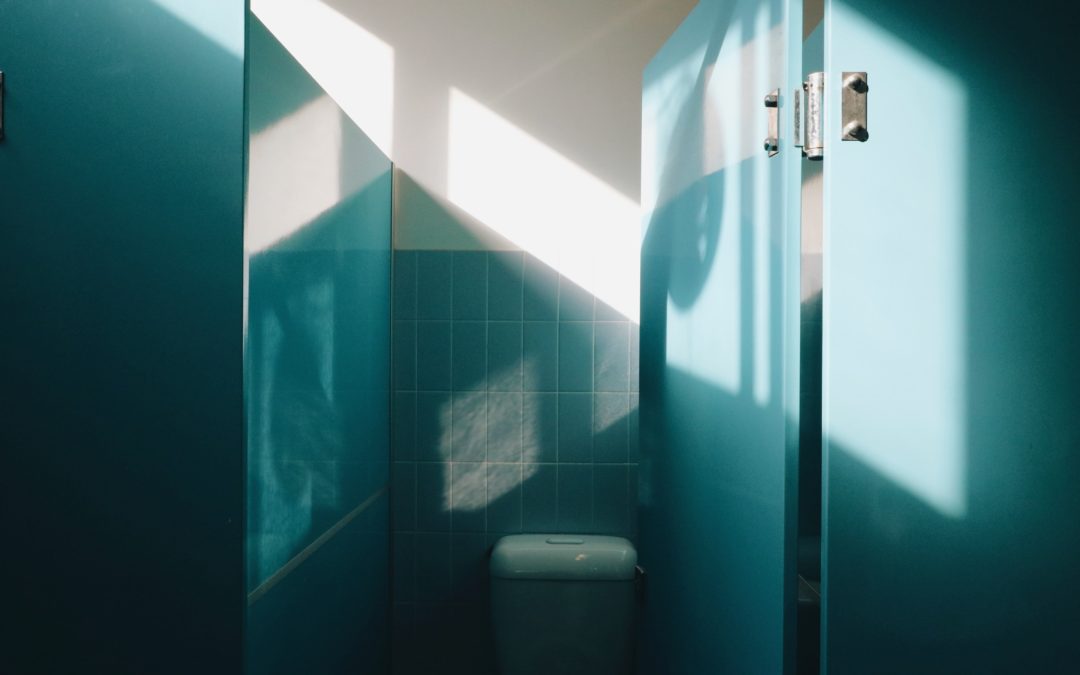Have you ever been in a public restroom and wondered how those bathroom stalls are measured and how they are made? Those individual partitions are actually quite the industry. There is a lot of engineering and planning that goes into them. You have to decide what type of stall you want as well as what size you want your bathroom stall to be. Also, you will need to make sure that you are compliant with the ADA as well as with local and state rules. Also, consider the current layout of the building and how it will be affected by the new partitions. You will want to construct a bathroom that matches the whole look of the building.
What are the Basics of the Bathroom Partitions?
First of all, the size. The standard height for bathroom partitions is 58 inches with a 12 inch gap from the bottom of the stall to the floor. The standard stall is 36 inches wide and 60 inches deep. Of course, not all stalls are “standard.” A lot depends on the design of the building and the space available. Also, bathroom partitions that are designed for people with disabilities run on a larger scale than the “average” and are required in most public restroom settings. Check with your local law and government ruling on the size that your bathroom needs to be.
What types of Settings Would a Bathroom Partition Be Needed?
Basically, anywhere. Bathroom partitions can be found anywhere from public park bathrooms, to schools, all the way to retail stores as well as restaurants. Bathroom partitions can be utilized for many other things such as changing rooms or basically anywhere that you need separation.
What type of Bathroom Stalls are There?
Although there are many different designs and bathroom stalls and they can be special ordered, there are four main basic types of bathroom stalls. First is a floor anchored and overhead braced. This is the most economical and what you will see in most bathrooms. Second economically is a floor mounted bathroom partition. And third, is a ceiling hung bathroom partition and last is floor to ceiling anchored bathroom partitions. The floor to ceiling partition is more expensive however, is recommended in public places where there is sure to be a large amount of abuse or vandalism to the bathroom stalls.
What are the Bathroom Stalls made of?
The first and strongest option for a bathroom partition is metal. The metal is powdered coated and sealed together over a honeycomb of cardboard. This option creates the prettiest but most expensive finish. The stalls are strong and can come in a variety of colors. They also are the most customizable because the way that they are created makes them easy to create in many sizes.
Another type of bathroom stall construction is plastic laminate. The plastic laminate stall is constructed by gluing a layer of plastic laminate to cardboard and layering it. This is a relatively inexpensive way to construct bathroom stalls however, it’s highly not recommended for areas that are high in water and humidity. This is because the way it is constructed allows for humid air to get in between the layers and cause it to separate. Plastic laminate is the cheapest option and can be installed basically anywhere because it is also the lightest constructed. Because laminate is more susceptible to moisture, it’s recommended to use a QR code maintenance app (eg Needs Attention) to ensure that damage is repaired before it spreads.
For areas with high humidity such as swimming pools and beaches, there is the ever strong plastic bathroom partitions. These plastic type partitions are recommended for public places that are on a budget as well as places who are not as concerned with look as they are concerned about functionality. Plastic partitions are not super customizable but they are easy and quick to install as well as sturdy.
Are you looking for something sturdy but also with a beautiful finish? There is always the stainless steel option. Although they are beautiful, they are heavy so stainless steel bathroom partitions are not recommended unless you are using the floor to ceiling mounts. Stainless steel are also a little harder to keep clean and because they smear even with just human touch. Stainless steel are not often seen and when they are its typically in high end shops. This is because they are expensive and higher maintenance.
Conclusion
In the end, there is a lot more information that goes into constructing bathroom partitions than one would first assume. You have to choose the size of your bathroom partition followed by what material you are going to use to construct it. Then add onto how you are going to mount it and mount the doors and you will see that after all these decisions are made you can make the best bathroom partitions. Bathroom partitions are a complicated piece of construction. Check with a local contractor today for your many options.


Recent Comments